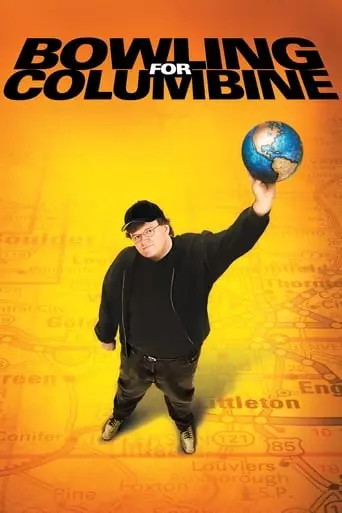
Bowling for Columbine (2002) Watch Online Free
This is not a film about gun control. It is a film about the fearful heart and soul of the United States, and the 280 million Americans lucky enough to have the right to a constitutionally protected Uzi. From a look at the Columbine High School security camera tapes to the home of Oscar-winning NRA President Charlton Heston, from a young man who makes homemade napalm with The Anarchist’s Cookbook to the murder of a six-year-old girl by another six-year-old. Bowling for Columbine is a journey through the US, through our past, hoping to discover why our pursuit of happiness is so riddled with violence.
Bowling for Columbine is a 2002 documentary directed by Michael Moore, which investigates the underlying causes of gun violence in the United States, focusing on the tragic Columbine High School shooting in 1999. Moore employs a blend of interviews, archival footage, and his characteristic humor to explore America’s complex relationship with firearms.
The film opens with Moore examining the events leading up to the Columbine massacre, where two students, Eric Harris and Dylan Klebold, opened fire on their classmates, resulting in 13 deaths. He questions how such an event could occur in a nation with a high rate of gun ownership. Through interviews with residents of Littleton, Colorado, and individuals connected to the tragedy, Moore seeks to understand the societal factors contributing to the incident.
Moore then broadens his scope to analyze the broader American gun culture. He contrasts the U.S. with neighboring Canada, where gun ownership is prevalent, yet gun-related violence is significantly lower. This comparison leads him to explore the role of the media in fostering a climate of fear, which he argues contributes to the nation’s obsession with firearms. The film also critiques the National Rifle Association (NRA) and its influence on American politics and gun legislation.
Throughout the documentary, Moore employs satire and irony to highlight the absurdities of the gun culture, including a segment where he attempts to open a bank account and is offered a free rifle as a promotional incentive. The film culminates with a poignant interview with Marilyn Manson, where he discusses the societal factors that may lead to violent acts, challenging the scapegoating of media figures.
Bowling for Columbine received widespread acclaim for its bold approach to documentary filmmaking and its unflinching examination of gun violence in America. The film won the Academy Award for Best Documentary Feature and sparked national conversations about gun control and media responsibility. Its influence extended beyond the film industry, inspiring activism and policy discussions aimed at addressing gun violence. The documentary’s critical perspective on the NRA and its impact on American politics also contributed to a broader public discourse on the role of lobbying in shaping policy decisions.
After watching Bowling for Columbine, you may experience a range of emotions, including shock, anger, and a sense of urgency. The film’s candid portrayal of the devastating effects of gun violence and the societal factors contributing to it can evoke deep empathy for the victims and their families. The critical examination of media influence and political lobbying may lead to frustration with systemic issues and a desire for change. Additionally, the film’s call to action may inspire a sense of responsibility to engage in discussions and advocacy related to gun control and violence prevention. Overall, Bowling for Columbine serves as a powerful catalyst for reflection and dialogue on the complex issue of gun violence in America.
